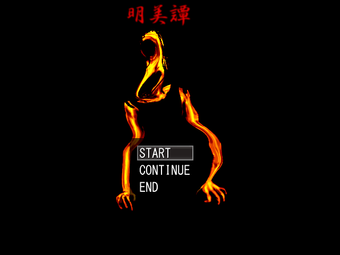Now, from 2004, let’s go forward of 10 years…
No, no. Take out two. Yes,exactly: 2012. The year the world was supposed to end.
The Costa Concordia Shipwrecked , Putin is re-elected, there is Expo 2012 in South Korea, the Montenegro tries to get into the EU…
In the field of RPG Horror this was a year of birth… Or to re-birth, having been there since 2005 a period of stalemate, to get to what we know today as the year of the boom of HOR-RPG: Ib, Mad Father, The Witch’s House, but also minor titles like The Crooked Man.
However, we will talk about those later: they are already part of Generation 1 of the HOR-RPG. Before going to these media phenomenons, we would like to consider a title that can represent a perfect transition between Generation 0, the Horror Experience, and Generation 1, the Character Drama.
So, while in London people were getting ready because there were only two days left before the thirtieth Olympic games, in Japan Akemi Tan was distributed for the first time.
Product history
Akemi Tan, or The Ballad of Akemi, does not have a development story full of events, evolutions or even particular controversies … Although it has a small peculiarity from the distribution point of view.
Akemi Tan was initially published in the “Horror Games” category of Freegame-mugen.jp, a still fairly active Japanese portal where free games of all kinds are distributed: from RPG Horror to bullet hell games in the style of Touhou Project, Akemi Tan was initially published on July 25, 2012, with a “score” of 65 points.
… But not only Japan.
Akemi Tan, in fact, can be found (even if this English version was published in 2014) on the well-known mainly English-American portal rpgmaker.net. And the game was not put on the site by some fans or someone who translated the game into English, but by the author himself, Kona Kona Kona Kona Kona, Kona5, or Outkataoka.
Exactly: Kona5 did everything alone from the distribution point of view, and the game was exported to America by himself.
The game has gained a good amount of comments in both countries, and there are also a lot of both Japanese and English gameplays, but the reception has been different from one community to another.
In the community of rpgmaker.net it was received with more enthusiasm, there are more positive comments to which the author himself replies (but we will talk about this in the author-work relationship), while on Freegame-mugen the opinions have been very mixed, also because it has been more widespread (perhaps also because the Japanese version has been around for more time) in Japan.
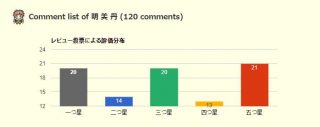
There are in fact many positive and negative reviews, ranging from five stars, to two stars, up to a single star.
Above all from the point of view of the plotthere were many users who found it unclear, even with the latest version (which seemed to partially fix these problems, according to what Kona5 himself said), others who instead understood it (and personally I, Ele, find myself among them) and they enjoyed the game together with its dramatic ending.
But on what triggered complaints or praise to the game, we will talk about it in the paragraph dedicated to the Trump Card.
Of this title, however, we can say that it was, as a phenomenon, a bit like a supernova: it had its period where many gameplayers played it, it grew for a while, but it never passed the niche like its colleagues who there will be in the next articles, or like the titles of the previous articles.
This is because the game did not have the appeal that would have attracted the general public due to its fairly simplistic plot (and, at times, which also expires in the so-called “wtf”), and which was mainly based on jumpscares and isolating atmosphere: such a game, unless it becomes a cult, in the HOR-RPG community does not last.
As has already been anticipated in the history of the product, we are facing a transition period.
It was impossible for us to ignore this title, finding ourselves faced with a product split in two between attempts to offer a plot with a background on one side, and on the other hand to make the player jump from the chair with its jumpscares.
Well, let’s try to understand together what is the trump card of this game.
The title screen shows us a deformed and brightly colored creature and a metallic sound as a background to the graphics.
It all starts outdoors, with a temple and a girl, Shimoko, who seems tempted to eat the offering of the village’s patron deity.
Only the sounds of the countryside are heard, just as following the introduction all our actions will be accompanied by an agonizing silence.
Silence is a way of expressing , a choice that will give us the constant presentiment of preparing ourselves for a disturbing sound or an ugly face that will present us on the screen.
The jumpscares, aimed directly at the player even before the character he plays, are not in this case the main ace of the title, although they are among the characteristics of the game most remembered and for which, among the public, it has spread by word of mouth. Not always the most prominent feature of a title, like we saw in Corpse Party, matches its trump card.
Akemi-Tan’s jumpscares are however interesting if you reflect on the historical context in which they are inserted, at least in the field of HOR-RPG, in which in the same year Ib came out which aimed at a totally different method to “frighten”, dramatizing the atmospheres according to the environment and following the narration.
These really seem like the latest cry that demons speak to the player willing to meet them, becoming less and less frequent as you change house.
I’ll probably be digressing for you now, so let’s get back to it.
What is Akemi-Tan’s trump card?
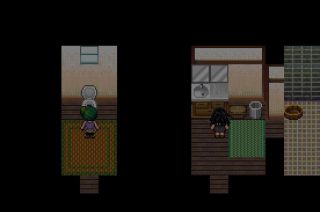
Here we are.
This is perhaps the best example to get closer to the topic.
Read here … From online dictionaries.
SUSPENSE
“A state of mind of apprehension, of anxious uncertainty, of those who await the solution of dramatic events; in particular, in a film or a story, a moment or situation that induces in the spectator or in the reader a feeling of suspension, of anguished waiting: a film, a novel full of suspense
Etymology: ← English; from loc. fr. (en) suspens ‘pending’, which is from lat. suspēnsum, part. pass. suspendĕre neutral; cfr. suspend.”
We see a monster in the next room. So, as for the whole first part of the game before reaching the forest where this wait seems to diminish little by little, it is not the jumpscares that distress us, but the awareness that they will come at any moment.
Don’t believe me? Let’s look at two types of images for a moment and summarize the context in which they were used.
A) 
Of course, the yellow face that opens the mouth seems to have exactly the intention of making us jump out of the chair and then immediately dispel the fright. Would it have been the same if we hadn’t wandered around the house for a long time, in silence? These are figures whose thoughts are that they could appear at any moment allows the player to remain in suspense, in an atmosphere where Shimoko’s daily reality is broken piece by piece.
The images used are only part of the tension that you feel, the tip of the iceberg that emerges from all the preparation behind it. See other remembered events that often occur on the maps themselves in addition to the images; from the giant starfish to the face that appears from the wall.
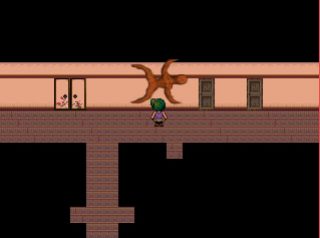
… And then we have this other example …
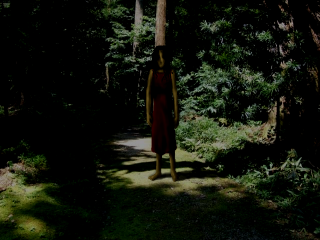
B) This instead appears in the forest. We have already faced many enemies and passed the exploration of three houses. Furthermore, we have already seen from the photos the deformed face of Ebiko, and met Akemi, and we defended ourselves from a floating head hitting it with a hammer. Above all, we have already run away from the demon once.
There is no longer even silence, but alongside these images there is a more dramatized sound accompaniment: it is the final confrontation, the face to face with the demon. We can observe that we have the desire on the part of the game to make us live the scene with a certain climax, unlike the first commented image.
So, after commenting on the use of images in different contexts, we can say with certainty that the suspense surrounding these images assign them a certain value.
Mind you, though, that this is a feature that stands undisturbed only in the first part of the game. The second, which would like to focus more on the background and starts when Ebiko is saved by Akemi in the forest, seems to totally change language and therefore we will not, unfortunately, talk about it in this paragraph.
We conclude these first observations on the trump card of the title with these two images in particular.

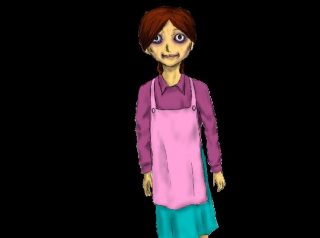
On the one hand, Ebiko’s mom, whom we see breaking apart piece by piece. On the other hand, we have a close-up on Akemi to show us the life drained from her eyes.
They look like two totally different images.
Certainly their emotional functions are. One should impress us, the other seeks our empathy and identification with the character.
Tuttavia c’è un motivo per cui ve ne sto parlando in un unico paragrafo…Ed è la vicinanza che si cerca con il giocatore.
Similarly to the function of the sequence of images that appear in the forest during the final confrontation and differentiating instead of the images of the various jumpscars, these really want to build a certain relationship of intimacy with the player.
The communication that the game seems to want to establish with us directly in person. It is a topic that we alredy treated in the Ao Oni article, but which applied in these contexts, especially for the second image, reveals enormous potential for the future.
The close contact with the player is not only sought to offer him “a hit of fright”, but also to increase the duration of his anguish, or even to push him to empathize with the young girl.
A type of use of images that the cinematographic language knows very well.
And I dare say, with the use that has been made of these images, the function has been perfectly successful compared to, for example, the CG of the close-ups in Midnight Train, that we already reviewed.
Just look at the difference:


On the left Akemi. We have a close-up, the blood, the expression on her face is exaggerated, even if the drawing style is in conflict with the images of his facesets (and this could be considered a technical awkwardness, added to the quality of the image). We can see her eyes go out, directly in contact with ours.
On the right Neil, from Midnight Train.
A half close-up, the face is only half turned towards us and the background is treated only with a tint of color. A type of image from which we viewers, emotionally, we can only distance themselves and consider the character in this case only as a “nice little figurine” that the title has decided to show off at this precise point in the plot to make us understand that the character had reached the stage of a psychological journey.
There would be an observation by the way, since with this title we will close the circle of Generation 0: it is curious how a title of this generation seems to make better use of the language of an audiovisual product to create emotions unlike a title belonging to that that we call Second Generation, which would seem to want to appear more shamelessly to the narrative code of cinematographic origin.
Professionality meter
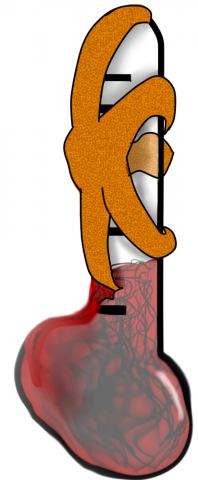 Perhaps having the thermometer at this level will seem quite obvious to you. Let’s take a closer look at everything …
Perhaps having the thermometer at this level will seem quite obvious to you. Let’s take a closer look at everything …
Packaging
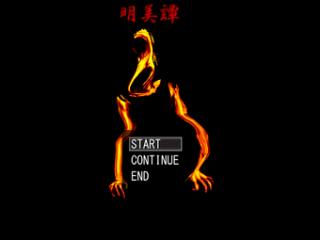
An excellent idea. The use of warm colors and the image that seems to be the result of a brush stroke are a good presentation of the title in contrast to the black background. The sound sector helps the player to feel immediately estranged, promising almost higher graphic expectations than what will be seen later on the maps and the faces of the characters.
The title seems to have been distributed by the author himself in a friendly way, not with the intention of offering a specific product to an audience. He is a player who turns to other players, a developer who turns to his peers.
We will talk about this in the next paragraph.
author-work relationship
If you see it on its rpgmaker.net page, you can immediately see the difference between Kona5 and other authors already analyzed here in Back to the Future, but also those that will be examined in the future.
In the article on Yume Nikki we talked about the “myth of the author”, about how he is not a person, but an entity among the community, which if he has to answer he does it in a very professional and detached way.
Here, with Kona5 this concept does not apply.
If we think of other authors, for example placing Kikiyama and Makoto Kedouin on two different levels, we will see how they both share an estranged image of themselves towards their audience.
An authorial identity then hidden by a professional production company, or a “mythical” identity based on the aura of mystery that has been built, both authors seem to distance themselves from users to which they turn. Regardless of whether they are intentional or not, it is important to consider how the authors of goods in industries always try to build a certain image and representation of themselves. It is an image that can be fatal for the way the public then receives the product, because it will precisely associate it with that type of image that an author has built.
Kona5 unfortunately does not seem to have done this reasoning, since probably his intentions for this title was not precisely to address an audience, but to his peers.
Although in the market this is a type of concept that is sought to convey for certain types of goods and services (see advertisements for food products for example, especially those in which a sort of patriotism comes into play), there is to consider the way these advertisements are done: I guess you also understand that there are two different ways (compared to the attitudes of the author of Akemi-Tan) to convey the same concept: one comes from marketing experts, the other comes from a real user who is distributing a game. And the difference can be seen.
On the Japanese site I assume that the authors themselves cannot respond to the comments received, so the author of Akemi Tan showed his personality more on the American site.



In fact, he responds to the comments (with good English too) so that he demonstrates an extrovert and playful nature, as well as his profile with an equally playful bio, with many emoticons.
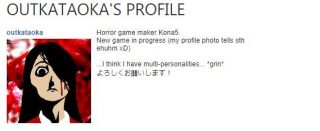
defects
Unfortunately, the game failed in the two key points that define the success of a video game: storytelling and gameplay.
NARRATION
I guess my intervention in this area is not needed to bring back to the memory of those who approached Akemi Tan a sense of inadequacy and incompleteness as the story is developed.
True, we have a resolution of the main plot: demonic danger, long part of the development in which this danger is addressed and resolution of the problem with what appears to be a voluntary quotation from the biblical event of the death and resurrection of Christ in the Christian context. Well yes, we have foreseen and guessed the date on which to release this article. Happy Easter to you too, guys.
Going back to us, we said that there is a main-plot resolution, it’s true, but what about the background?
Akemi who complains about her loneliness, who hints at her past without this being further investigated.
We are not saying that it should have been developed necessarily, because unfortunately the game seems to be suspended in a pit with one foot planted on the priority of the gaming experience, and the other foot on the desire to tell us a story.
Perhaps for what the intentions of the game were, it would have been more honest (although perhaps less attractive if the author wanted to attract the attention of simple passing spectators in a certain sense) remove the background on Akemi and leave her 100% in mystery.
Although she looks like a mature and very sweet girl (she is a character who has put a lot of tenderness on one side I admit it) it would have been better, having come to these conclusions, that she wouldn’t reveal so much about her or at least not in this way.
It’s like showing candy to a child and then devouring it whole under his disappointed eyes, or as the master Miyagi says in Karate Kid addressing his pupil:
“Walk on road, hm? Walk left side, safe. Walk right side, safe. Walk middle, sooner or later…Get squish just like grape.”.
An alternative would have been to fill the exploration phase with small clues about the village and the girl in order to leave more room for the background, but at this point one wonders if it would have been the same Akemi-Tan we know.
GAMEPLAY
Unfortunately this title suffers in many situations from an error that we have seen in the A Figment Of Discord review.
Do you once again expect a “Eeh ?!” like that of the first review?
Well, because you won’t have it … At least on those levels.
We can summarize this concept as follows: the error is the same, but in different fields, and at different levels of gravity.
Let’s take Akemi Tan first. In many, many moments of the game you have to find yourself doing one thing first and then making another happen.
Practical example (I took the worst case): Shimoko cannot put the offer to the Ou until the player goes up the stairs and the game tells you “This is the temple of the Ou, we have to make offers” etc.
In this case a solution could have been to put in another way, even more “forced”, the explanation of the temple and the Ou: for example those lines of text could be shown automatically, before the player could move .
Now I leave you with the old AFoD review, which complained much more … Angry way, an inability to manage the gameplay.
“Eeh?!
What is a cake doing in the kitchen now that I sifted to perfection ten minutes ago ?!
It is simple: first the riddle had not been solved, so the cake did not appear. All logical, everything runs smoothly, doesn’t it? It’s not true.
According to the game, that note about birds that love shiny things and desserts had to serve something … Yes, but actually… No.
The player remembers that in the kitchen there is nothing, and therefore it is normal not to control it anymore, so this damn cake can find it only in a raptus of desperation in which he searches again, for the seventieth time, in all the rooms … But has activated the pie switch, so it can go on. I’m sorry to be dramatic, but I’m freaking out. You don’t structure a gameplay this way…”
Well, the error described seems identical.
But I will tell you various reasons why in Akemi Tan these types of forcing are easier to fix and less serious in general as errors.
Before going to another moment of the game, let’s say why I don’t go crazy and I don’t fossilize on the initial scene. It is simply very easy to fix: it was enough to put the exact same lines of dialogue a few moments before, and it would have already been fixed: it is simply a lack of foresight, not a real incapacity.
Now let’s move on to another very particular moment of the game: Shimoko’s father’s drawer, the Nankin code and the shotgun.

Compared to the AFoD cake, here there is a not bad camouflage of the forcing, in part.
In fact, it is seen more easily by those who have already played the game, who knows that in the father’s drawer there is the rifle that will help the girl to escape from her home.
I will say that this part is also not perfect, but we go one step at a time, we will return later.
Since we are from Shimoko’s point of view, and that is her home, she probably knows that there is a rifle in her father’s drawer: when the house is still quiet, when she still does not know that “the village has become dangerous” through his mother, she probably found it unnecessary to have to take herfather’s rifle.
Before the call from Shimoko’s mother to her daughter, where she explicitly says “get out of the village, it has become a dangerous place” the game does not even give you the opportunity to enter a code in the father’s drawer for this reason.
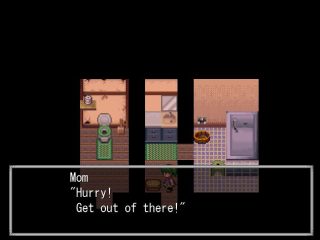
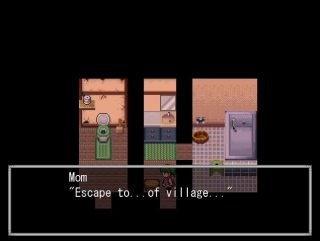
At this point this thing had to be made more evident: in fact, before the mother’s call, the drawer does not even give a textbox that says “Dad’s drawer is blocked by a Nankin code”, or clearly say that there is a rifle , which Shimoko will find useful later.
At this point you simply had to add one or two textboxes that gave more relevance to the drawer, so that the player could also check it several times, in the worst case.
You see? Move the text a little earlier, make an important object a little more obvious … These are mostly communication problems. Communication problems are solved with little, simply by saying more, improving the focus of important objects, there are no flaws at the base.
Let’s still compare it to the AFoD cake, again quoting my part of the review.
“The player remembers that in the kitchen there is nothing, and therefore it is normal not to control it anymore”
Here, here comes another point in favor of the drawer we mentioned earlier.
In Akemi Tan, it was only meant to be more obvious, but it’s not like it never appeared in the room before. The player knows there is, the game simply had to make it clear that it was an important element.
For AFoD and its magic cake that appears out of nowhere … There is a real problem at the base, in fact.
The cake does not appear in any way until the player reads a ticket that mentions “sweet things”. The cake could have been there from the beginning, but the player connected it to something useful (and, from the point of view of the protagonist, it occurred to her to control it better) when they read the ticket, and therefore they can think “Ah, the sweets have something to do with this… The cake in the kitchen! ”
The game seems to make the player look foolish, as if they were unable to make connections between what they read and what they see, therefore as if they cannot instinctively remember a cake that they could see before and therefore everything in that puzzle is nauseating and meaningless .
Here, these are real flaws in gameplay that have problems right at the base.
Returning to Akemi-Tan, we also noticed that that’s not the only game who has difficulties communicating with the player: we have those problems even in Ao Oni. Here is a part of our article on Ao Oni:
“The riddles. We’re talking … About releasing the information.
Well, however ingenious they may be, many have failed to fully appreciate them, complaining of relative complexity.
This I believe is mainly given by the fact that often there is not enough communication of the game for the player, leaving it completely to himself without offering instructions that can make the user understand the nature of the puzzle.”
At this point we can assume that this is a real problem that characterizes Generation 0, because we have seen something similar in CORPSE-PARTY, but from a narrative point of view. Here is another part, this time of the article on Corpse Party, which talks about this:
“It goes from a frantic atmosphere, since Ayumi and Yoshiki have been reported in the real world until they discover that the parallel dimension is still behind them, at an incredibly slow one which is facing the accumulation of information that focuses all at one time. During the rest of the game, before this point we don’t even have clues that could have been left to assimilate gradually the with past events and that we are told in this scene.”
Conclusioni
And so, finally, we end the first part of our journey.
Perhaps not all readers will have known at first glance the titles we have proposed, but it must be considered that without these the characteristics of the Horror RPGs that we all know would not have developed.
The closeness that is sought with the player, the desire to offer an immersive experience, the spirit of wandering. This, ladies and gentlemen, was Generation 0.




